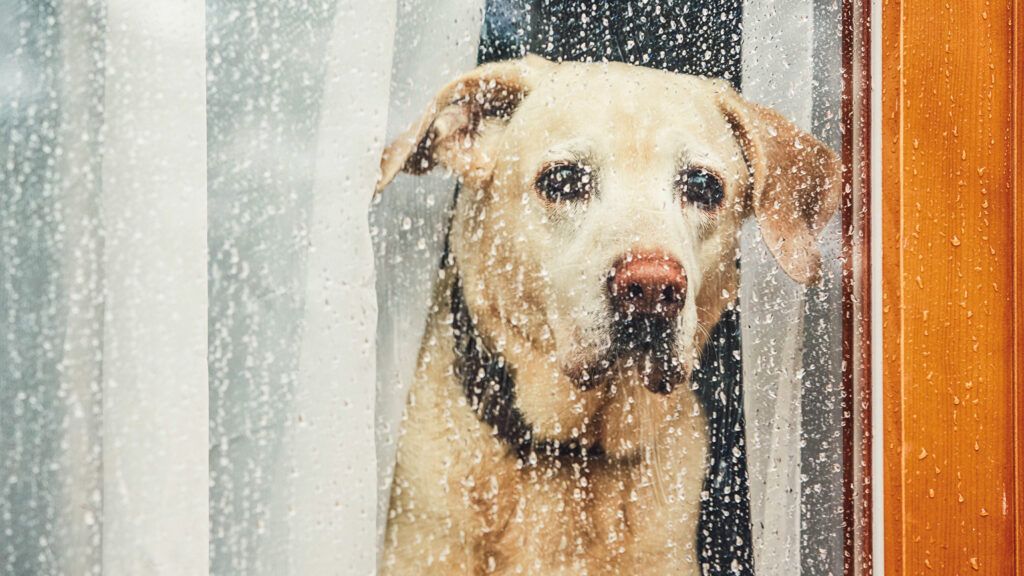Many cats and dogs are able to relax and even sleep when left home alone. But other pets have an extreme response: They become distressed at the mere sight of you picking up your keys or putting on your coat. While you’re away, they pant, pace, frantically claw at doors and walls, howl or bark nonstop, have house-training accidents, or rip up furniture. These could be signs of separation anxiety. Here are five steps you can take to help your pet.
1. Make your departure and return times calm. The way you leave and return to the house sets off cues that your pet reacts to. Making a big fuss and giving him lots of attention before you depart only builds up his anxiety. Instead, offer a calm goodbye or leave without saying anything. When you return, resist gushing over him. Walk in and sit down for a few minutes, then give your pet some attention. When you leave without fanfare, and return the same way, you’re telling your pet that this is no big deal. Consider saying the same phrase, such as “Be right back,” every time you leave. He’ll associate those words with your leaving—and also with your returning.
2. Create a safe, low-stress environment. Unhousebroken puppies and destructive dogs can typically be left in a crate for a few hours when you’re out. But dogs with separation anxiety may try to escape from crates and have been known to chew or claw at the metal or plastic until they’ve caused themselves injury. If your dog gets anxious in a crate, confine her in a safe room with a baby gate instead. Make sure her space is set up for success. Remove anything that might be ingested or destroyed. This may be challenging, as some particularly anxious dogs have gone so far as to rip up baseboards and chew through doors.
Before you leave, turn on soothing music (or the radio or TV) or plug in a dispenser with calming pheromones. Never leave your dog without something to do—provide plenty of toys, a Kong and puzzle feeders to keep her engaged. You may want to save an extra-special toy just for when she is home alone. Teach your pet to associate your leaving the house with good things happening. For cats, try hiding a few small treats to give them an opportunity to hunt.
3. Limit time left alone. A puppy may be able to handle being home alone for a couple of hours, and an older dog may tolerate up to eight hours if necessary. But for a dog with separation anxiety, try to limit the length of time that he’ll be by himself. Come up with alternatives: Can you bring your pet to work? Enroll him in doggy day care? Ask a neighbor to take him on a midday walk?
4. Try progressive desensitization. You can teach your dog to enjoy, or at least tolerate, being home alone. Consult an animal behaviorist or an experienced trainer to help you implement an effective method of progressive desensitization. One method goes something like this: Start off by asking your dog to stay, then go to the other side of the door for a few seconds. Reappear calmly. Do this several times a day. Next, leave the room for a few seconds, then reappear. If your dog stays calm, gradually increase the length of time you are out of sight. Take it slow and always end with a successful attempt.
5. Discuss medication. Some pets are so distressed that they need antianxiety medication or tranquilizers. Talk to your veterinarian about what is right for your pet. A combination of medication and some of these other techniques may be effective. You might eventually be able to wean your pet off the medication.
Your pet doesn’t have to struggle every time you leave the house. She just needs your help to feel safe. When you come home to a calm pet, you’ll both feel better.
Did you enjoy this story? Subscribe to All Creatures magazine.





